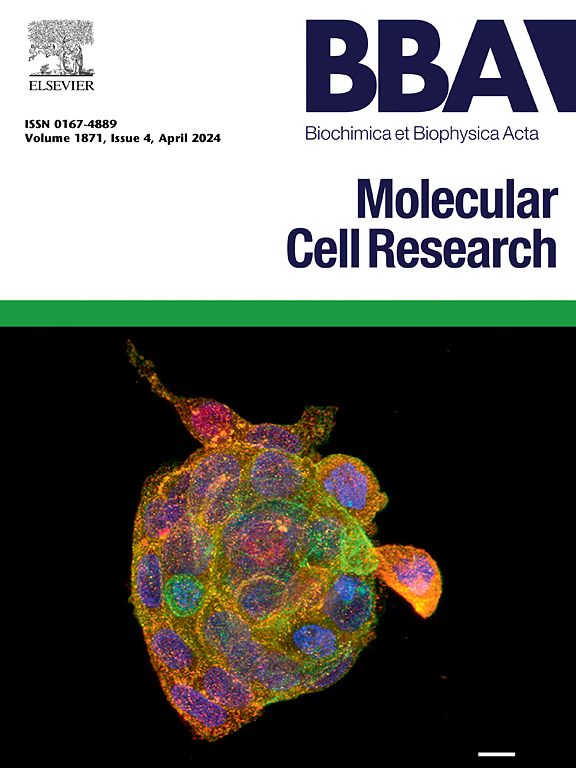The role of hypoxia-inducible factor-3α in human disease
IF 3.7
2区 生物学
Q1 BIOCHEMISTRY & MOLECULAR BIOLOGY
Biochimica et biophysica acta. Molecular cell research
Pub Date : 2025-06-11
DOI:10.1016/j.bbamcr.2025.120007
引用次数: 0
Abstract
Hypoxia-inducible factors (HIFs) are master regulators of cellular adaptation to hypoxia in both disease and normal physiological conditions. HIFs consist of two subunits: the oxygen-sensitive alpha (α) and the constitutively expressed beta (β). The three oxygen-dependent alpha subunits—HIF-1α, HIF-2α, and HIF-3α—encoded by distinct genes are crucial for regulating cellular responses to hypoxia in various vertebrates, including humans. Much of our understanding of HIFs is based on studies on HIF-1α and HIF-2α subunits. Recent studies have shown that, although HIF-3α is the least studied member, it may also play essential roles in the development of human diseases, including cancer, cardiovascular and respiratory diseases, metabolic disorders, and other pathological processes. In this review, we focus on how HIF-3α overexpression is associated with various human diseases, aiming to better understand its role in human pathophysiology and its potential use as a therapeutic target.
缺氧诱导因子-3α在人类疾病中的作用
低氧诱导因子(hif)是疾病和正常生理条件下细胞适应低氧的主要调节因子。hif由两个亚基组成:氧敏感α (α)和本构表达β (β)。hif -1α、HIF-2α和hif -3α是由不同基因编码的三种氧依赖性α亚基,在调节包括人类在内的多种脊椎动物对缺氧的细胞反应中起着至关重要的作用。我们对hif的理解大部分是基于对HIF-1α和HIF-2α亚基的研究。最近的研究表明,虽然HIF-3α是研究最少的成员,但它也可能在人类疾病的发生发展中发挥重要作用,包括癌症、心血管和呼吸系统疾病、代谢紊乱等病理过程。在这篇综述中,我们重点关注HIF-3α过表达如何与各种人类疾病相关,旨在更好地了解其在人类病理生理中的作用及其作为治疗靶点的潜在用途。
本文章由计算机程序翻译,如有差异,请以英文原文为准。
求助全文
约1分钟内获得全文
求助全文
来源期刊
CiteScore
10.00
自引率
2.00%
发文量
151
审稿时长
44 days
期刊介绍:
BBA Molecular Cell Research focuses on understanding the mechanisms of cellular processes at the molecular level. These include aspects of cellular signaling, signal transduction, cell cycle, apoptosis, intracellular trafficking, secretory and endocytic pathways, biogenesis of cell organelles, cytoskeletal structures, cellular interactions, cell/tissue differentiation and cellular enzymology. Also included are studies at the interface between Cell Biology and Biophysics which apply for example novel imaging methods for characterizing cellular processes.

 求助内容:
求助内容: 应助结果提醒方式:
应助结果提醒方式:


